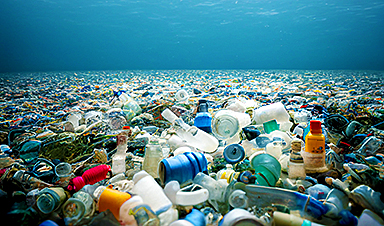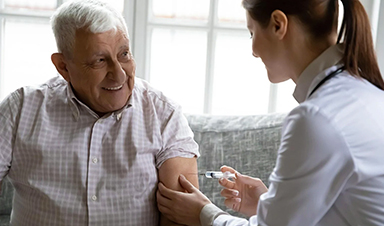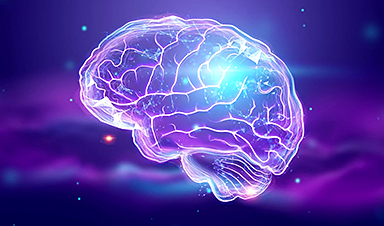Microplastics pose a great threat to human health. These tiny plastic debris can enter our bodies through the water we drink and increase the risk of illnesses. They are also an environmental hazard; found even in remote areas like polar ice caps and deep ocean trenches, they endanger aquatic and terrestrial lifeforms.
To combat this emerging pollutant, researchers at the Indian Institute of Science (IISc) have designed a sustainable hydrogel to remove microplastics from water. The material has a unique intertwined polymer network that can bind the contaminants and degrade them using UV light irradiation. The research is published in the journal Nanoscale.
Scientists have previously tried using filtering membranes to remove microplastics. However, the membranes can become clogged with these tiny particles, rendering them unsustainable. Instead, the IISc team led by Suryasarathi Bose, Professor at the Department of Materials Engineering, decided to turn to 3D hydrogels.
The novel hydrogel developed by the team consists of three different polymer layers—chitosan, polyvinyl alcohol and polyaniline—intertwined together, making an Interpenetrating Polymer Network (IPN) architecture. The team infused this matrix with nanoclusters of a material called copper substitute polyoxometalate (Cu-POM).
These nanoclusters are catalysts that can use UV light to degrade the microplastics. The combination of the polymers and nanoclusters resulted in a strong hydrogel with the ability to adsorb and degrade large amounts of microplastics.

Credit: Soumi Dutta
Most microplastics are a product of the incomplete breakdown of household plastics and fibers. To mimic this in the lab, the team crushed food container lids and other daily-use plastic products to create two of the most common microplastics existing in nature: polyvinyl chloride and polypropylene.
“Along with treatment or removal of microplastics, another major problem is detection. Because these are very small particles, you cannot see them with the naked eye,” explains Soumi Dutta, first author of the study and SERB National Post-doctoral fellow at the Department of Materials Engineering.
To solve this problem, the researchers added a fluorescent dye to the microplastics to track how much was being adsorbed and degraded by the hydrogel under different conditions. “We checked the removal of microplastics at different pH levels of water, different temperatures, and different concentrations of microplastics,” explains Dutta.
The hydrogel was found to be highly efficient—it could remove about 95% and 93% of the two different types of microplastics in water at near-neutral pH (∼6.5). The team also carried out several experiments to test how durable and strong the material was. They found that the combination of the three polymers made it stable under various temperatures.

Credit: Soumi Dutta
“We wanted to make a material that is more sustainable and can be used repetitively,” explains Bose. The hydrogel could last for up to five cycles of microplastic removal without significant loss of efficacy. What’s more, Bose points out, is that once it has outlived its use, the hydrogel can be repurposed into carbon nanomaterials that can remove heavy metals like hexavalent chromium from polluted water.
Moving forward, the researchers plan to work with collaborators to develop a device that can be deployed on a large scale to help clean up microplastics from various water sources.
More information: Soumi Dutta et al, Polyoxometalate nanocluster-infused triple IPN hydrogels for excellent microplastic removal from contaminated water: detection, photodegradation, and upcycling, Nanoscale (2024). DOI: 10.1039/D3NR06115A
Journal information: Nanoscale
Provided by Indian Institute of Science
News
New Once-a-Week Shot Promises Life-Changing Relief for Parkinson’s Patients
A once-a-week shot from Australian scientists could spare people with Parkinson’s the grind of taking pills several times a day. The tiny, biodegradable gel sits under the skin and releases steady doses of two [...]
Weekly injectable drug offers hope for Parkinson’s patients
A new weekly injectable drug could transform the lives of more than eight million people living with Parkinson's disease, potentially replacing the need for multiple daily tablets. Scientists from the University of South Australia [...]
Most Plastic in the Ocean Is Invisible—And Deadly
Nanoplastics—particles smaller than a human hair—can pass through cell walls and enter the food web. New research suggest 27 million metric tons of nanoplastics are spread across just the top layer of the North [...]
Repurposed drugs could calm the immune system’s response to nanomedicine
An international study led by researchers at the University of Colorado Anschutz Medical Campus has identified a promising strategy to enhance the safety of nanomedicines, advanced therapies often used in cancer and vaccine treatments, [...]
Nano-Enhanced Hydrogel Strategies for Cartilage Repair
A recent article in Engineering describes the development of a protein-based nanocomposite hydrogel designed to deliver two therapeutic agents—dexamethasone (Dex) and kartogenin (KGN)—to support cartilage repair. The hydrogel is engineered to modulate immune responses and promote [...]
New Cancer Drug Blocks Tumors Without Debilitating Side Effects
A new drug targets RAS-PI3Kα pathways without harmful side effects. It was developed using high-performance computing and AI. A new cancer drug candidate, developed through a collaboration between Lawrence Livermore National Laboratory (LLNL), BridgeBio Oncology [...]
Scientists Are Pretty Close to Replicating the First Thing That Ever Lived
For 400 million years, a leading hypothesis claims, Earth was an “RNA World,” meaning that life must’ve first replicated from RNA before the arrival of proteins and DNA. Unfortunately, scientists have failed to find [...]
Why ‘Peniaphobia’ Is Exploding Among Young People (And Why We Should Be Concerned)
An insidious illness is taking hold among a growing proportion of young people. Little known to the general public, peniaphobia—the fear of becoming poor—is gaining ground among teens and young adults. Discover the causes [...]
Team finds flawed data in recent study relevant to coronavirus antiviral development
The COVID pandemic illustrated how urgently we need antiviral medications capable of treating coronavirus infections. To aid this effort, researchers quickly homed in on part of SARS-CoV-2's molecular structure known as the NiRAN domain—an [...]
Drug-Coated Neural Implants Reduce Immune Rejection
Summary: A new study shows that coating neural prosthetic implants with the anti-inflammatory drug dexamethasone helps reduce the body’s immune response and scar tissue formation. This strategy enhances the long-term performance and stability of electrodes [...]
Scientists discover cancer-fighting bacteria that ‘soak up’ forever chemicals in the body
A family of healthy bacteria may help 'soak up' toxic forever chemicals in the body, warding off their cancerous effects. Forever chemicals, also known as PFAS (per- and polyfluoroalkyl substances), are toxic chemicals that [...]
Johns Hopkins Researchers Uncover a New Way To Kill Cancer Cells
A new study reveals that blocking ribosomal RNA production rewires cancer cell behavior and could help treat genetically unstable tumors. Researchers at the Johns Hopkins Kimmel Cancer Center and the Department of Radiation Oncology and Molecular [...]
AI matches doctors in mapping lung tumors for radiation therapy
In radiation therapy, precision can save lives. Oncologists must carefully map the size and location of a tumor before delivering high-dose radiation to destroy cancer cells while sparing healthy tissue. But this process, called [...]
Scientists Finally “See” Key Protein That Controls Inflammation
Researchers used advanced microscopy to uncover important protein structures. For the first time, two important protein structures in the human body are being visualized, thanks in part to cutting-edge technology at the University of [...]
AI tool detects 9 types of dementia from a single brain scan
Mayo Clinic researchers have developed a new artificial intelligence (AI) tool that helps clinicians identify brain activity patterns linked to nine types of dementia, including Alzheimer's disease, using a single, widely available scan—a transformative [...]
Is plastic packaging putting more than just food on your plate?
New research reveals that common food packaging and utensils can shed microscopic plastics into our food, prompting urgent calls for stricter testing and updated regulations to protect public health. Beyond microplastics: The analysis intentionally [...]





















